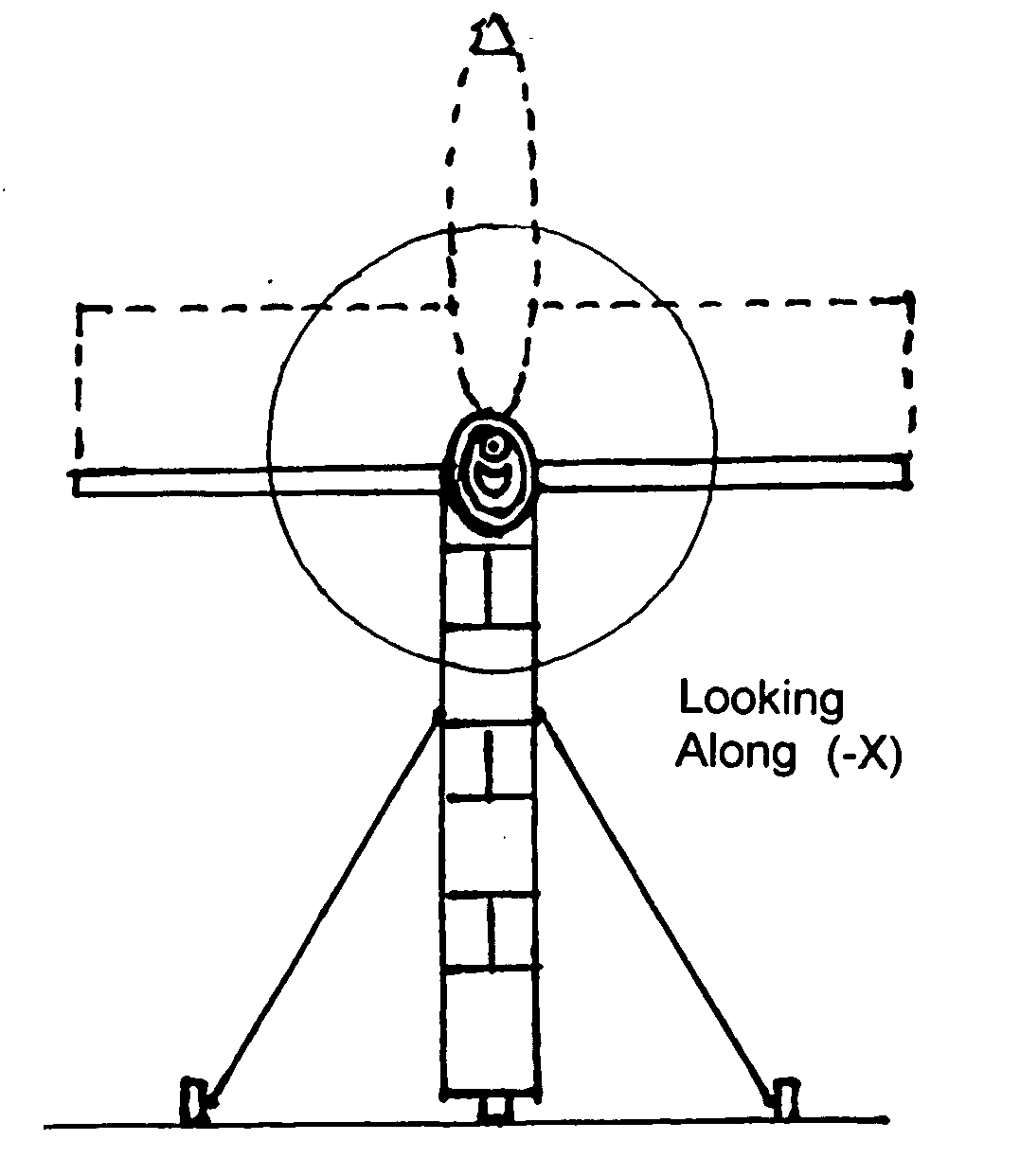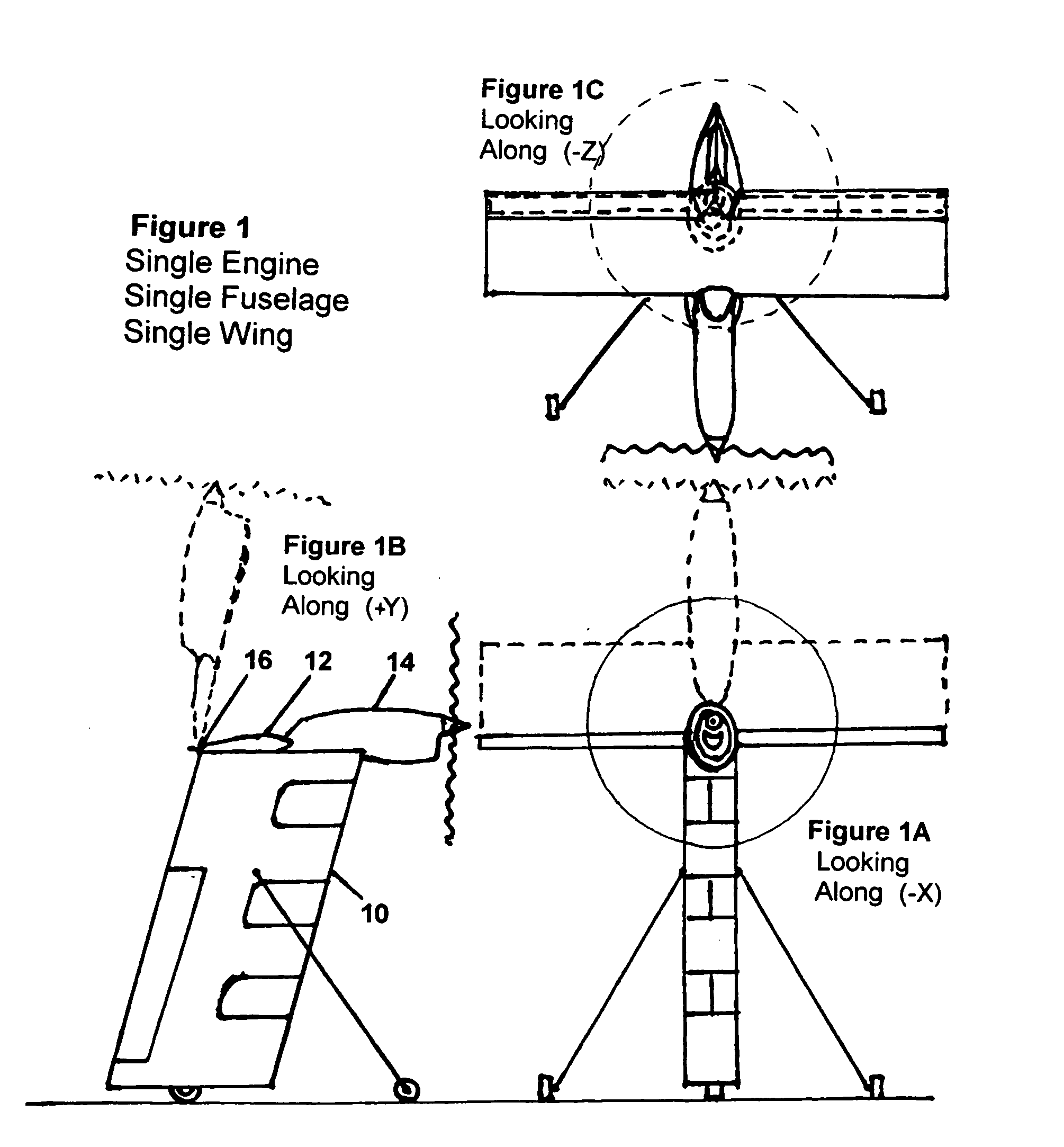Tall V/STOL aircraft
a technology of v/stol aircraft and v/stol, which is applied in the direction of aircraft, vertical landing/take-off aircraft, transportation and packaging, etc., can solve the problems of limited payload, high cost of manufacture, operation and maintenance, and economic questionability of aircraft, so as to minimize the effect of ground effects, improve performance stability, and low disk loading
- Summary
- Abstract
- Description
- Claims
- Application Information
AI Technical Summary
Benefits of technology
Problems solved by technology
Method used
Image
Examples
Embodiment Construction
[0032] A vertical takeoff and landing (VTOL) airplane is described which is tall rather than long. This new configuration facilitates placing the propulsion engines at a maximum distance from the ground. It further allows improved motion and attitude control during takeoff and landing. The preferred embodiment, shown in FIG. 4, of the airplane consists of twin vertical cargo / passenger fuselage structures 10 having a thick airfoil shape in plan view. Near the top is a horizontal lifting wing 12 spanning the space between the vertical fuselage structures. A tractor propulsion engine 14 is attached to the leading edge of this lifting wing. The wing and engine can tilt as a unit around a horizontal axis 16 thereby changing the thrust and lift direction. The assembly tilts to point the engine skyward for takeoff and for landing touchdown. For cruise this assembly is tilted to point the engine so that the thrust is horizontal to the ground in the direction of cruise flight. Utilizing the ...
PUM
 Login to View More
Login to View More Abstract
Description
Claims
Application Information
 Login to View More
Login to View More - R&D
- Intellectual Property
- Life Sciences
- Materials
- Tech Scout
- Unparalleled Data Quality
- Higher Quality Content
- 60% Fewer Hallucinations
Browse by: Latest US Patents, China's latest patents, Technical Efficacy Thesaurus, Application Domain, Technology Topic, Popular Technical Reports.
© 2025 PatSnap. All rights reserved.Legal|Privacy policy|Modern Slavery Act Transparency Statement|Sitemap|About US| Contact US: help@patsnap.com



